C
Cave Dweller
Guest
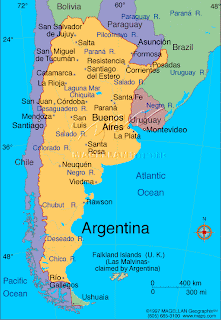

The Argentine national anthem is famous in rugby circles due to the significant passion put into performing it by Los Pumas´ players during the pre-match ritual. The English translation of the shortened version of the Argentina national anthem that is peformed for rugby matches is as follows:
May the laurels be eternal, (Sean eternos los laureles)
the ones who knew how to win, (que supimos conseguir)
the ones who knew how to win. (que supimos conseguir)
Live crowned in glory... (Coronados de gloria vivamos)
Or let us swear to die gloriously! (o juremos con gloria morir!)
Or let us swear to die gloriously! (o juremos con gloria morir!)
Or let us swear to die gloriously! (o juremos con gloria morir!)
Two years before the first ever Rugby World Cup, Argentina hosted New Zealand for a two test tour with both matches being played at Ferrocaril Oeste in Buenos Aires. The All Blacks won the first test 33-20 but Los Pumas responded to come back from an 18-9 halftime deficit to draw the match 21-21 in front of 30,000 fans. Legendary Pumas flyhalf, Hugo Porta scored all of Argentina´s points and underlined himself as one of the best players of his generation. To this day he continues to be considered one of the best flyhalves of all time.
The match is a testiment to how far rugby in Argentina has come with the UAR now capable of hosting matches throughout the country. The former home of Pumas test matches, Ferrocaril Oeste, has known as the Cathedral of Argentine rugby and even suggested as being the Twickenham of Buenos Aires. Today the venue is not large enough to be used as a home venue for Pumas matches as larger venues in Buenos Aires such as Velez Sarsfeld and the River Plate Stadium are much larger and have attracted fullhouses for international matches. During the twenty-five years thats have taken place since the time of this match, in 1985, the sport has boomed in playing numbers and spectator interest and truely is a prime candidate to host a Rugby World Cup. Games are no longer restricted to Buenos Aires and with Argentina set to enter an expanded Tri Nations in 2012 crowds can only grow as the matches will be tournament fixtures not friendlies.
This year will be an unprecedented one for rugby in Argentina, with the Pumas playing a total of 12 matches, including six at home, against the strongest nations in the world.
Pumas will play their first home Rugby Championship match against South Africa on August 25 at the Estadio Malvinas Argentinas in the western city of Mendoza.




The Estadio Malvinas Argentinas, previously known as the Estadio Ciudad de Mendoza, in Mendoza was one of six venues used by Argentina to host the 11th edition of the FIFA World Cup in 1978. The stadium played host to six matches and has also been a key Argentinean stadium ever since. It was selected as a venue to host the 2001 FIFA World Youth Championship in Argentina and the 2011 Copa América. The stadium was built in 1976 specifically for the 1978 FIFA World Cup.
The Estadio Malvinas Argentinas has a capacity at present of 40,268 making it a similar size to Wellington which hosted six pool matches and two Quarter-Finals at Rugby World Cup 2011. It also has a larger capacity than five venues used in France 2007 including Bordeaux, Montpellier and Toulouse who all hosted four pool matches. Thus, Mendoza as it stands, is ready to host Rugby World Cup matches.
Mendoza is Argentina´s fourth largest city with a population of 1.1 million and is the capital of Mendoza province. It is also the largest city in the Andean region of Argentina. It was founded in 1561 by Pedro del Castillo and in 2008 was listed as one of the top 10 historic destinations in the World by National Geographic magazine. It is one of the most famous cities in Argentina due to the regions production of wine. Mendoza produces over 60% of all wine from Argentina and is the largest producer of wine in Latin America. Red wines including Malbec, Cabernet Sauvignon and Tempranillo are Mendoza´s most important varieties. The region also has a large olive oil industry and is one of Argentina´s top skiing destinations.
Mendoza is located 1,100KM west of Argentina´s capital, Buenos Aires and 380KM east of Chile´s capital, Santiago. The main road between the two South American capital cities passes through Mendoza. Argentina´s second largest city, Córdoba, is 500KM north-east of Mendoza. Compared to venues used in France 2007 Mendoza appears isolated but it certainly is not compared to Australia 2003. For instance, the two Quarter-Final venues used for Rugby World Cup 2003, Melbourne and Brisbane, are over 1500KM apart with a flight time of 3.5 hours. In comparison, by plane the trip from Buenos Aires to Mendoza is less than 2 hours by plane. An additional example is the distance from the two largest venues at Rugby World Cup 2011 - Auckland and Christchurch. They are over 900KM apart and it takes over 15 hours to travel from one to the other by car because of the ferry crossing between the North and South Islands. Mendoza is, therefore, located comparatively close and will mean travelling by land or air is in no way a large or complicated task.
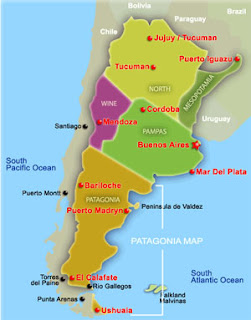
The Estadio Ciudad de La Plata, just outside Buenos Aires, will play host to their clash against Rugby World Cup holders New Zealand on September 29




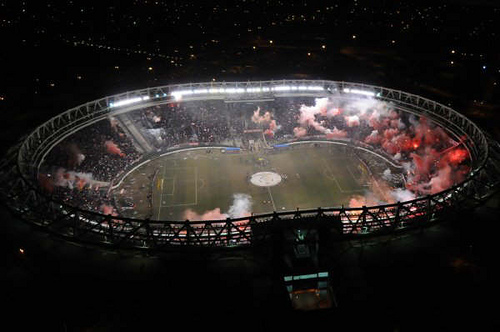
One of South Americas newest and most impressive stadiums is the Estadio Ciudad de La Plata in La Plata. It was selected as a key venue for the 2011 Copa América and will host the opening match of the tournament. The stadium opened in 2003 with Argentina playing host to Uruguay in a friendly soccer match. It has not played host to international rugby yet but is certain to do so with Argentina entering The Rugby Championship in 2012. The stadium has been chosen to host Argentina vs New Zealand in September 2012. The city, however, has played host to a number of important rugby fixtures such as Argentina A vs France in June 2010 and the 2010 URBA Final. The city has produced a number of international rugby players including Federico Martín Aramburu and Mariano Galarza.
The Estadio Ciudad de La Plata has a seating capacity of 53,000 making it larger than twelve of the thirteen venues selected to host Quarter-Finals for Rugby World Cup 2011 and eight of the ten French stadiums used for Rugby World Cup 2007. Its size and modernity makes it an ideal venue to host Rugby World Cup matches. Should Argentina bid to host Rugby World Cup 2023, La Plata could host at least four pool matches and at least one Quarter-Final.
It appears to be a very similar stadium to Loftus Versfeld Stadium (51,000) in Pretoria, South Africa which hosted five matches at Rugby World Cup 1995, including one Quarter Final and the Bronze Final. It also hosted six matches at the 2010 FIFA World Cup. Like Pretoria, La Plata is located close to the country´s largest city. Pretoria is located 53KM from Johannesburg and La Plata is 60KM from Buenos Aires. In addition to Pretoria, two different stadiums from Johannesburg were used for the 2010 FIFA World Cup. Should Argentina 2023 become a reality, the idea should be to do exactly the same thing with Buenos Aires having two stadiums and La Plata one.
La Plata is Argentina´s sixth largest city with a population of 732,000 and is the capital city of the province of Buenos Aires. It was founded on November 19, 1882 by Dardo Rocha to be the headquarters of the provincial government so that it could be recognized separately from the city of Buenos Aires which is the country´s federal district. La Plata is also home to Argentina´s largest cathedral and one of the country´s best universties, the Universidad Nacional de La Plata which President Cristina Fernández de Kircher graduated in Law as did her husband and previous Argentina President, Nestór Kirchner. La Plata means silver in Spanish.
La Plata is located 60KM east of Buenos Aires making it an easy place to get to.
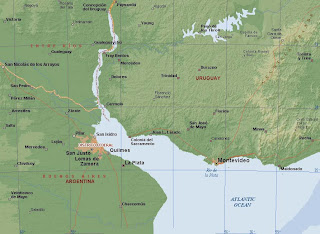

Greater Buenos Aires
The final match in the competition against Australia on October 6 will be staged at the Estadio Gigante de Arroyito in Rosario.




Argentina hosted the 11th edition of the FIFA World Cup in 1978 with the Estadio Dr. Lisandro de la Torre, also known as the Estadio Gigante de Arroyito hosting 6 matches. As one of the seven venues used by Argentina, Rosario's largest stadium is certain to host matches should Argentina host Rugby World Cup 2023. The stadium was opened in 1929 but remodeled from 1957-1968 into a concrete stadium. It was again remodeled from 1974-78 to give Rosario an appropriate venue to host matches at the 1978 FIFA World Cup. It has been subsequently used to host other important soccer events including matches during the 1987 Copa América, and international matches involving Argentina, most recently a FIFA World Cup 2010 qualifier between Argentina and Brazil in 2009.
The stadium is similar to that of the Estadio Chateau Carreras in Córdoba in that in addition to having a decorated history with soccer it has also hosted international rugby. In 2008, like Córdoba, the Estadio Gigante de Arroyito hosted a rugby international for the first time as Argentina played Scotland. Despite missing many key players due to the match taking place before the French play-off´s, the Rosario public responded and packed the stadium. They would not be disappointed as Argentina scored two tries to nil to win the match 21-15. The stadium will host Argentina vs Australia in The Rugby Championship with the city awarded this mega match in October.
The Estadio Gigante de Arroyito has a capacity, at present, of 41,654. At present the Estadio Gigante de Arroyito is a quality venue fit to host Rugby World Cup matches and could be a similar host city to Brisbane for Rugby World Cup 2003 or Wellington for Rugby World Cup 2011.
The city of Rosario is the third largest in Argentina after the capital, Buenos Aires and Córdoba. It was founded in 1793 but has become increasingly important for Argentina due to industry and its strategic location on the Parana River which is wide and deep enough for ships to access. The city has a population of 1.2 million and is famous for its rich involvement in art as well as its nightlife.
Rosario is located in eastern Argentina and is the largest city in the Santa Fé province. It is 300KM north of Buenos Aires, 373KM east of Córdoba, 800KM south-east of Tucumán and 146KM south of the city of Santa Fé. It is located close to half way between Buenos Aires and Córdoba and the main highway from Buenos Aires to Tucumán also passes through Rosario as does the highway between Buenos Aires and Santa Fé. The city is therefore ideally suited to act as a venue for key matches with teams moving west from Buenos Aires, or east to Buenos Aires. Given the size of the Estadio Gigante de Arroyito, it could be used to stage 4 or 5 pool matches, in the same way as the above mentioned venues from Rugby World Cup 2003 and 2011. Fans would be greatly advantaged by being able to follow their team in one direction and take in plenty of Argentina at the same time. It would make travelling by land a real an easy option for teams and fans alike.
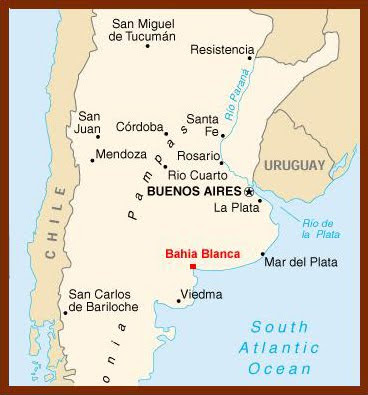
Statistics of Argentina against the Tri Nations teams:
Argentina vs Australia: Played 17 Won 4 Lost 12 Drew 1
Argentina vs New Zealand: Played 17 Lost 16 Drew 1
Argentina vs South Africa: Played 13 Lost 13
- Avellaneda (46,000)
- Buenos Aires (River Plate - 67,000)
- Córdoba (57,000)
- La Plata (53,000)
- Mar del Plata (35,000)
- Mendoza (45,000)
- Resistencia (25,000)
- Rosario (41,000)
- Salta (20,000)
- San Juan (25,000)
- San Salvador de Jujuy (24,000)
- Santa Fé (40,000)
- Tucumán (32,000)
We are looking forward to compete in the formerly known tri nations this year. Al tough we are the little guy I think it can only be good for the future of Rugby in Argentina who have to compete with Football.

